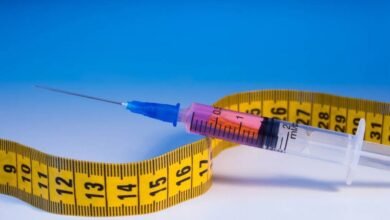
Introduction
Ear piercing is a popular cosmetic procedure that has been embraced across cultures for centuries. Whether you’re looking to enhance your style or commemorate a special occasion, choosing a reputable ear piercing clinic is crucial. In Abu Dhabi, where the healthcare and cosmetic industries are highly advanced, finding a clinic that ensures comfort and safety is paramount. In this article, we will guide you through everything you need to know about selecting the right Ear piercing in Abu Dhabi.
What is Ear Piercing?
Ear piercing involves creating a small hole in the earlobe or other parts of the ear to insert jewelry. The procedure can be simple or intricate, depending on the type of piercing and the desired placement.
- Definition and Purpose: Ear piercing is a form of body modification where a needle or piercing gun is used to create a hole in the ear for the insertion of earrings. It is often done for aesthetic reasons, self-expression, or cultural practices.
- Types of Ear Piercing: There are various types of ear piercings, each with its own unique appeal. These include lobe piercings, cartilage piercings, and more specialized piercings like industrial or conch piercings.
Why Choose Professional Clinics?
Opting for a professional piercing clinic over a DIY approach is essential for several reasons:
- Benefits of Professional Piercing: Professional clinics offer a sterile environment, experienced staff, and high-quality equipment. This minimizes the risk of infections and ensures the piercing is done correctly.
- Risks of DIY Piercing: Attempting to pierce your ears at home can lead to serious complications, such as infections, improper placement, and excessive pain. Professional clinics are equipped to handle these risks effectively.
Key Considerations When Choosing an Ear Piercing Clinic
Selecting the right clinic involves evaluating several factors:
- Clinic Cleanliness and Hygiene: Ensure that the clinic follows strict hygiene practices. The use of sterilized tools and clean environments is crucial for preventing infections.
- Professional Qualifications: Check that the staff are certified professionals with experience in ear piercing. Their expertise can make a significant difference in the outcome and safety of the procedure.
- Equipment and Techniques: The clinic should use high-quality, sterile equipment and follow modern techniques to ensure a comfortable and safe experience.
Popular Types of Ear Piercings Offered
Understanding the types of ear piercings available can help you decide which one is right for you:
- Standard Lobe Piercing: This is the most common type, involving a simple hole through the earlobe. It’s usually quick and has a relatively short healing time.
- Cartilage Piercing: This piercing is done on the cartilage of the ear, which is more complex and takes longer to heal compared to lobe piercings.
- Industrial Piercing: This involves two holes connected by a single piece of jewelry. It requires precise placement and care during the healing process.
- Helix and Conch Piercings: These piercings are located on different parts of the cartilage and offer a distinctive look. They can be more challenging to care for and require professional attention.
The Piercing Procedure
Here’s a breakdown of what to expect during your visit to a professional piercing clinic:
- Initial Consultation: During your consultation, the piercer will discuss your preferences, explain the procedure, and address any concerns you may have. This is also the time to choose your jewelry.
- Piercing Process: The procedure itself involves cleaning the area, marking the spot, and using a needle or piercing gun to create the hole. Professional piercers use high-precision tools to ensure accuracy.
- Aftercare Instructions: After the piercing, you will receive detailed aftercare instructions to help with healing and prevent complications. Following these instructions is crucial for a successful healing process.
Safety Measures to Look For
When choosing a clinic, ensure they adhere to safety standards:
- Sterilization Practices: The clinic should use autoclaves or other methods to sterilize equipment. This is vital for preventing infections.
- Use of High-Quality Jewelry: Ensure that the jewelry used is made from hypoallergenic materials such as titanium or surgical steel, which reduce the risk of allergic reactions.
- Emergency Protocols: A reputable clinic should have protocols in place for handling complications or emergencies that may arise during or after the piercing.
What to Expect During Your Visit
Preparation and understanding the process can help make your visit smooth:
- Preparing for Your Appointment: Avoid applying lotions or makeup around your ears before the appointment. Arrive with clean ears and be ready to discuss your preferences with the piercer.
- What Happens on the Day of the Piercing: You will be guided through the procedure step by step. The piercer will ensure you are comfortable and answer any questions you may have.
- Post-Piercing Care: After the piercing, follow the care instructions provided. This typically includes cleaning the area regularly and avoiding touching or twisting the jewelry.
Healing and Aftercare
Proper aftercare is essential for a successful healing process:
- Typical Healing Time: Healing times vary depending on the type of piercing. Lobe piercings typically heal within 6-8 weeks, while cartilage piercings can take several months.
- Common Aftercare Practices: Clean the area with saline solution or a recommended cleanser, avoid swimming in pools, and follow any additional care instructions provided by your piercer.
- How to Handle Complications: If you experience unusual pain, swelling, or discharge, consult your piercer or a medical professional promptly. Early intervention can prevent more serious issues.
Understanding Pain and Discomfort
Pain and discomfort are normal parts of the piercing process:
- What to Expect: You may feel a sharp sensation during the piercing, followed by mild soreness. Most discomfort is manageable with over-the-counter pain relief.
- Pain Management Techniques: Use ice packs to reduce swelling and follow your piercer’s advice for pain management. Avoid touching or moving the jewelry excessively.
Common Piercing Issues and Solutions
Being aware of potential issues can help you address them effectively:
- Infections and How to Avoid Them: Infections can occur if the piercing isn’t properly cared for. Ensure you follow hygiene practices and consult a professional if signs of infection develop.
- Allergic Reactions to Jewelry: Some people may develop allergies to certain metals. Opt for hypoallergenic jewelry to minimize this risk.
- Keloids and Other Growths: Keloids are thick, raised scars that can form at the site of the piercing. If you notice these or other growths, seek advice from your piercer or a dermatologist.
When to Seek Professional Help
Knowing when to seek professional assistance is crucial:
- Identifying Issues That Require Medical Attention: Seek help if you experience severe pain, excessive bleeding, or signs of an infection that do not improve with home care.
- Knowing When to Consult a Piercing Specialist: If you have concerns about the healing process or complications, consult a piercing specialist for guidance.
Conclusion
Choosing the right ear piercing clinic in Abu Dhabi is essential for a comfortable and safe experience. By considering factors such as hygiene, professional qualifications, and aftercare, you can ensure a successful piercing journey. Remember to follow all aftercare instructions and seek professional help if needed. With the right clinic, ear piercing can be a rewarding and enjoyable experience.
FAQs
- How long does it take for an ear piercing to heal?
- Healing times vary, with lobe piercings typically taking 6-8 weeks and cartilage piercings several months.
- Can I change my earrings before the piercing is fully healed?
- It’s best to wait until the piercing is fully healed before changing earrings to avoid complications.
- What should I do if my piercing gets infected?
- If you notice signs of infection, such as redness, swelling, or discharge, consult a professional for advice and treatment.
- Are there any risks associated with ear piercing?
- Risks include infections, allergic reactions, and keloids. Choosing a reputable clinic and following aftercare instructions can minimize these risks.
- How can I ensure my piercing heals properly?
- Follow the aftercare instructions provided by your piercer, keep the area clean, and avoid touching or twisting the jewelry.


